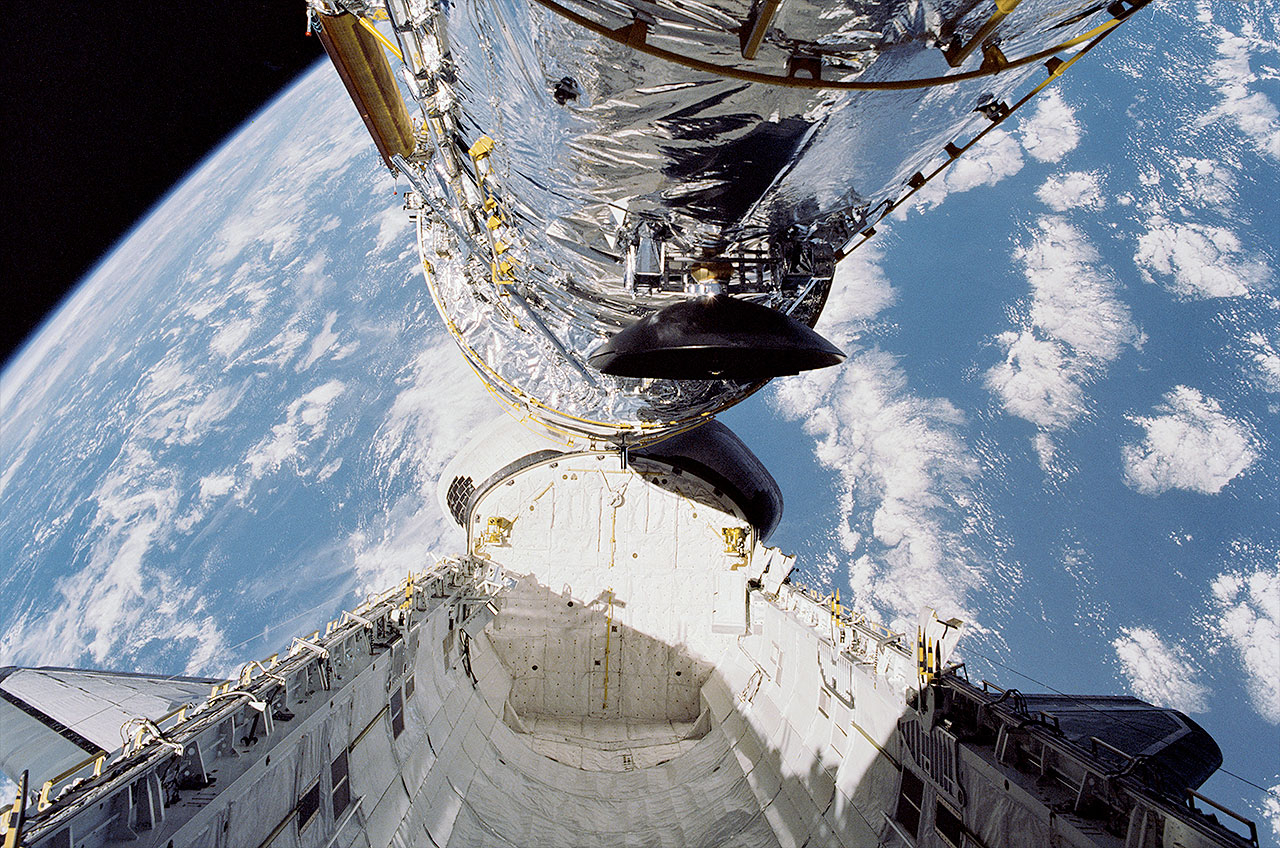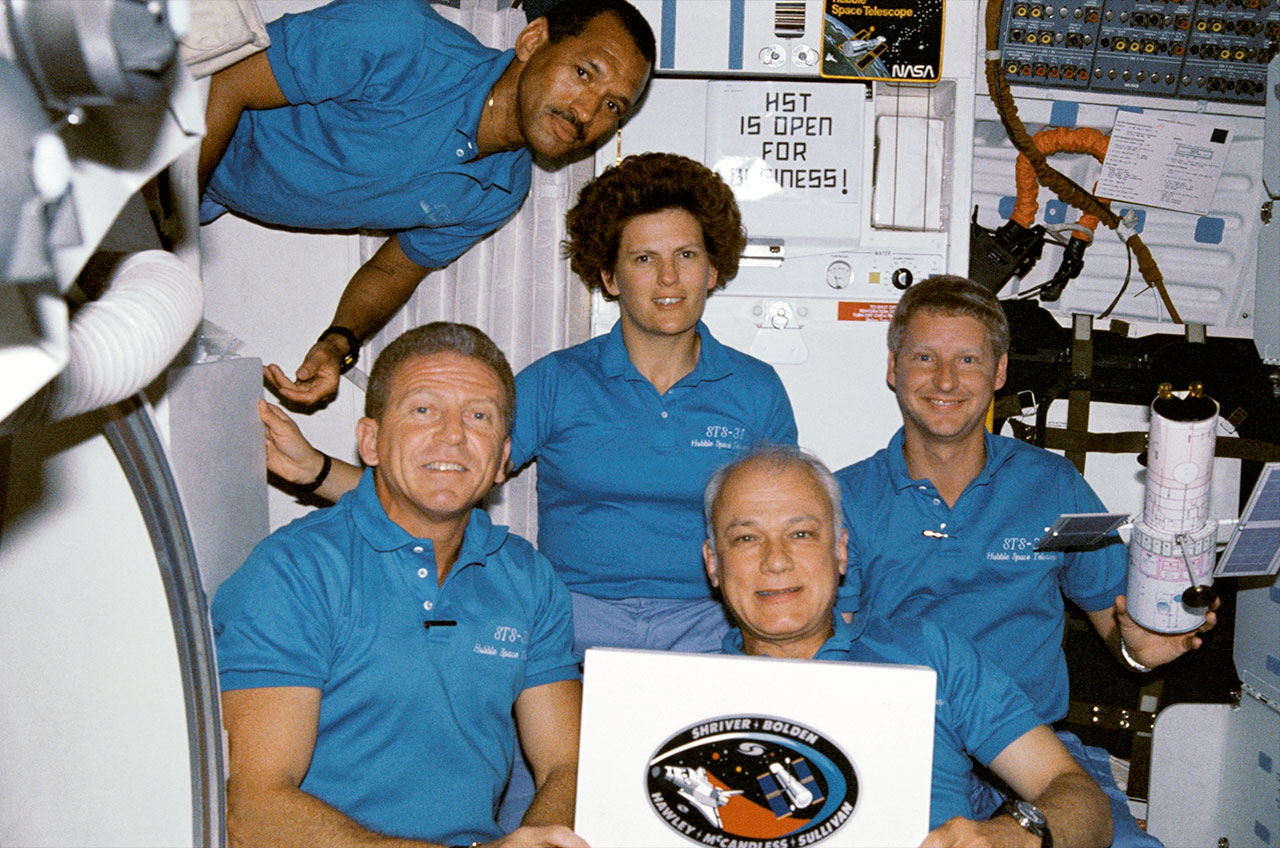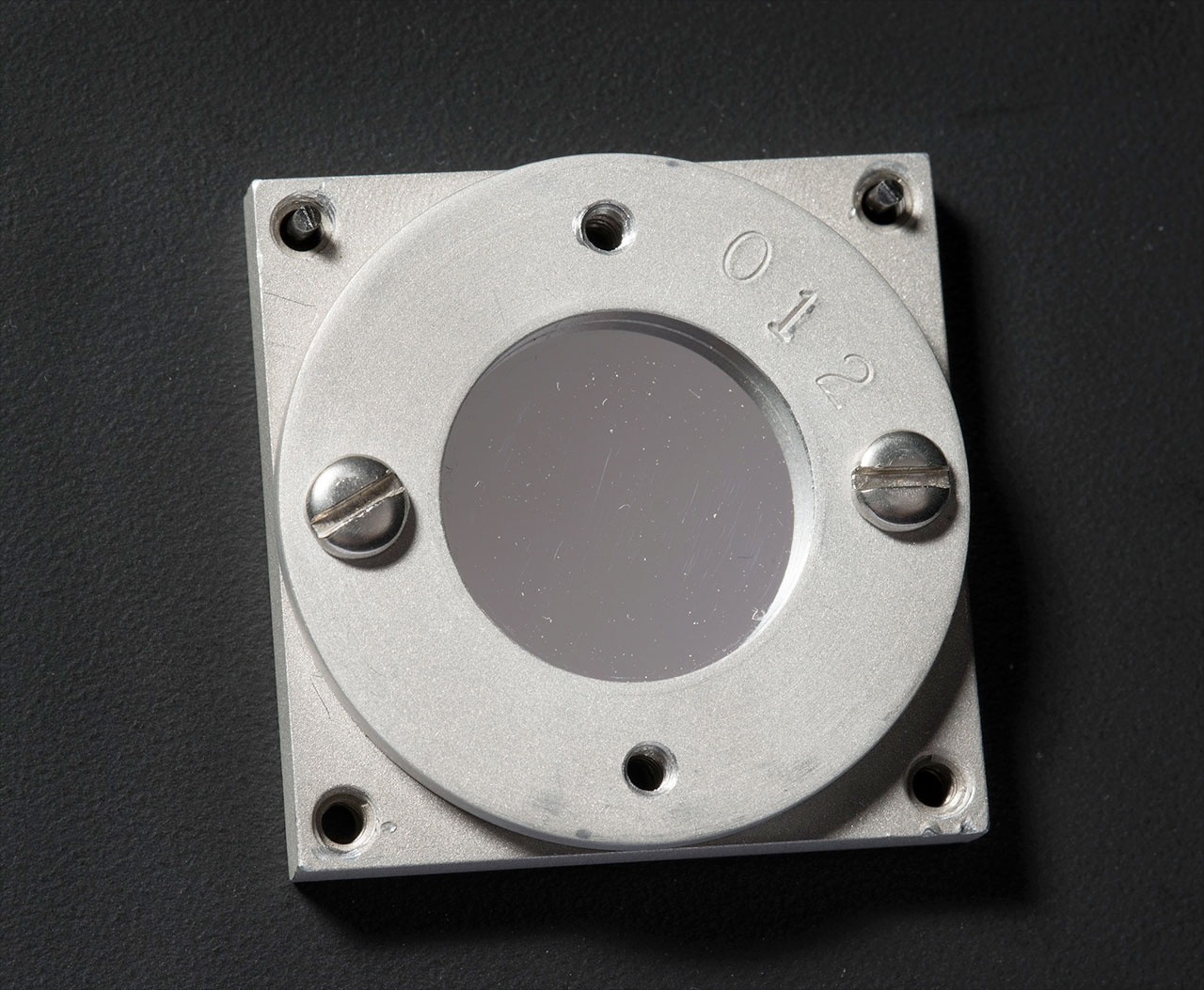30 notable objects that launched with the Hubble Space Telescope 30 years ago
Thirty years ago, NASA's space shuttle Discovery lifted off on a mission to release into orbit what would become the world's most famous science instrument, the Hubble Space Telescope.
Launched on April 24, 1990, the orbiting observatory was one of the largest items that the shuttle ever carried into space over the course of its 135 missions. The realization that came after the Hubble was deployed that its mirror was flawed and then the later astronaut-performed upgrades that made possible the telescope's astronomical revelations, captured more than just the universe at which it was pointed, but also the attention and adoration of the public like no other apparatus has to date.
The Hubble Space Telescope's deployment also dwarfed, literally and figuratively, everything else that was on board Discovery for the STS-31 mission.
Related: The best Hubble Space Telescope images of all time!
As an example — and as one of 30 items noted here to mark the flight's 30th anniversary — most people are likely not to know that Hubble's ID plate was not the only dedication plaque for an observatory to enter space that day. Stored inside one of Discovery's middeck lockers, in a duffel bag-sized pouch called the Official Flight Kit (OFK), was a brass marker that was borrowed from what was then the new home of Iowa's largest refracting telescope.
The plaque for the John H. Witte, Jr. Observatory in Sperry, Iowa, which was flown on behalf of the Southeastern Iowa Astronomy Club at the request of one of state's senators, included an excerpt from "The Adventures of Huckleberry Finn" by Mark Twain: "We had the sky up there, all speckled with stars, and we used to lay on our backs and look up at them, and discuss about whether they was made or only just happened."
Hubble's historic hitchhikers (items 2 through 4)
Packed alongside the Witte plaque were two items already rich with history.
Breaking space news, the latest updates on rocket launches, skywatching events and more!
Discovery's commander Loren Shriver flew a few items for his alma mater, Purdue University in Indiana, but the standout among them was a silk scarf once worn by famed aviatrix Amelia Earhart in 1930. The yellow and brown scarf had a diamond and stripe pattern and was part of the university's aviation archives.
Also flown in the STS-31 OFK was a piece of wood from "Old Ironsides," the USS Constitution, the world's oldest commissioned naval vessel still afloat. The historic fragment was on loan from the U.S. Naval Academy Museum in Annapolis, Maryland (mission specialist Bruce McCandless had graduated from the academy in 1958).
Carried separate from the OFK by mission specialists Kathryn Sullivan and Steven Hawley was a direct link to their primary payload's namesake.
"I happened upon the idea that there must be some astronomical artifact from one of the observatories [that astronomer Edwin] Hubble worked on that we possibly could take along as a memento," Sullivan said during a television broadcast. "And with some considerable assistance from the Smithsonian museum we managed to obtain this device, which is the guiding eyepiece we are assured."
The eyepiece came from the 100-inch telescope at Mount Wilson Observatory in Pasadena, California, where Hubble conducted some of his most important work on the composition of galaxies beyond our own.
"It's a great pleasure to have something of such historical significance, something that so directly symbolizes Edwin Hubble's fundamental contributions to astronomy," said Sullivan.
Space telescope stand-ins (items 5 through 8)
Before returning to Earth, Shriver, Sullivan, Hawley, McCandless and Discovery's pilot, Charlie Bolden, posed together for a photo on the middeck. Included in the shot was a prop seen floating through the shuttle's cabin throughout the mission: a paper model of the Hubble Space Telescope.
The 13-inch-tall (33-centimeter) model — 1/40th the size of the real spacecraft — included labels for each panel and part of the observatory. It was utilized by the crew as a reference during the deployment and check-out operations.
Related: How the Hubble Space Telescope works (infographic)
Also on board the space shuttle, included in the OFK, were several other stand-ins for the space telescope.
The European Space Agency (ESA), which partnered with NASA to contribute to the assembly and operation of the Hubble, sent to space 250 space telescope art prints to present to its team members after the mission. Similarly, NASA's Marshall Space Flight Center in Alabama flew a die to emboss Hubble certificates to thank those who contributed to the flight.
Marshall was also one of four organizations, including Sky & Telescope magazine, that sent a real stand-in for a major part of the observatory: primary mirror witness plates. These nearly 2-inch square (4.5-cm) mirrors were among the dozen that were inside the same tank when the telescope's mirror was aluminized. The plates were then used to test the integrity of the reflective surface, substituting for the 7-foot, 10.5-inch (2.4-meter) primary mirror, itself.
Space (sans-telescope) science (items 9–14)
The Hubble was not the only science instrument to fly on Discovery. Before and after the telescope was deployed on April 25, the STS-31 crew conducted several other experiments to advance other disciplines than astronomy and cosmology.
The mission's protein crystal growth payload continued the work on biomedical studies begun on earlier space shuttle missions. The experiments, which involved growing more perfect protein crystals in the microgravity environment of space than what is possible on the ground, were aimed at improving food production and developing new medicines to combat cancer, AIDS, high blood pressure, organ transplant rejection and rheumatoid arthritis.
Another investigation, proposed eight years earlier by a then-high school student, observed the effect of weightlessness on electrical arcs.
"We did notice that the behavior of the arc became more and more erratic and its amplitude increased as the [magnetic] field went up," Bolden reported, describing the electrifying scene inside the Jacob's ladder-inspired arc chamber.
Other research performed by the STS-31 mission included an off-the-shelf skin-puncture device to measure the response of a test subject's immune system (in this case, Hawley's) to several different types of toxins all at once; a membrane processing payload to advance material production, including polymers, catalysts and superconductors; an automated monitor to measure particle contamination and detachment in Discovery's payload bay during the pre-launch and ascent periods of the flight; and a monitor to record both the rate and total dosage of all types of ionizing radiation (gamma ray, neutron and proton radiation) encountered by the orbiter while in space.
Discoveries aboard Discovery (items 15–20)
"You know what that is, I bet," radioed Hawley to Mission Control.
"Not only what it is," replied astronaut capcom Story Musgrave, "but whose it is."
That cryptic exchange was inspired by Hawley, floating on Discovery's flight deck, holding up a wristwatch to the camera for Mission Control to see. The timepiece was not intended to be a part of the STS-31 mission, but rather had gone missing from among astronaut Sonny Carter's personal items during Discovery's previous mission, STS-33, five months earlier.
The techs preparing the spacecraft between the two flights failed to find the watch, but there it was when Hawley removed a few of the shuttle's panels while on orbit.
"How much do you think it is worth to him to have it back?" Hawley joked, as he strapped the watch to his wrist.
"Well, that watch gets two rides for the price of one," Musgrave responded.
Other items in Discovery's OFK were limited to just the single launch, but might seem no less random in their selection. There were the football and soccer ball, both deflated, flown for the University of South Carolina and the South Texas Youth Soccer Association, respectively; an umpire's indicator for the Baseball Hall of Fame in Cooperstown, New York; and a 4-inch square (10-cm) ceramic tile for the American Whippet Club, a dog breeding club.
There were also two pocket-size copies of the United States' Constitution, flown on behalf of the Commission on the Bicentennial of the U.S. Constitution.
Related: 9 weird things that flew on NASA's space shuttles
Crew choice (items 21 through 29)
In addition to their own personal items, the STS-31 astronauts also had a chance to request mementos be flown for some of the organizations that supported them and their success aboard the mission.
For example, McCandless flew a patch for the U.S.S. McCandless, a U.S. Navy frigate named for both his grandfather, Commodore Byron McCandless, and his father, Bruce McCandless I.
Hawley flew a pennant for the University of Kansas Jayhawks, his alma mater's sports teams, and Sullivan, an oceanographer with the U.S. Naval Reserve, flew a footprint-shaped decal that was inscribed, "Follow in the Footsteps of a Navy Oceanographer." Both items were affixed to the shuttle's middeck lockers during the mission, as was a U.S. Naval Reserve 75th Anniversary decal.
Fifty-two small paper stars were flown for the Literacy Volunteers of America, which were later presented post-flight to advocates in each of the 50 U.S. states and the District of Columbia. Two National Youth Fun and Fitness patches were packed for the President's Council on Physical Fitness & Sports and the National Recreation and Park Association.
The crew also continued NASA tradition by flying 7,300 small American flags, 500 embroidered STS-31 mission patches and 560 Silver Snoopy Award lapel pins to be distributed to NASA employees, contractors and dignitaries as a token from the flight after Discovery's return to Earth.
Eyes on the observatory (item 30)
There were numerous other items carried aboard Discovery during the STS-31 mission, but only one type of payload was able to document and convey the sheer majesty of the Hubble Space Telescope being released into orbit.
Discovery flew two specially-designed IMAX cameras, one mounted in the payload bay and one used by the crew inside the cabin, that were used to capture the first views of humanity's "eyes on the universe." The resulting footage was used in the IMAX films "Destiny in Space" (1994) and "Hubble 3D" (2010).
Like a number of the items that were flown on the STS-31 mission, the cameras were later transferred to the Smithsonian's National Air and Space Museum. Of course, that does not include the Hubble Space Telescope, itself, which remains operational in Earth orbit 30 years after its launch.
Click through to collectSPACE to see more photos and watch videos of more notable objects aboard the STS-31 mission.
- Hubble Space Telescope: 30 years that transformed our view of the universe
- Hubble at 30: Astronaut Mike Massimino looks back at fixing a space icon
- Space Shuttle Discovery: 5 surprising facts about NASA's oldest orbiter
Follow collectSPACE.com on Facebook and on Twitter at @collectSPACE. Copyright 2020 collectSPACE.com. All rights reserved.
OFFER: Save 45% on 'All About Space' 'How it Works' and 'All About History'!
For a limited time, you can take out a digital subscription to any of our best-selling science magazines for just $2.38 per month, or 45% off the standard price for the first three months.

Robert Pearlman is a space historian, journalist and the founder and editor of collectSPACE.com, a daily news publication and community devoted to space history with a particular focus on how and where space exploration intersects with pop culture. Pearlman is also a contributing writer for Space.com and co-author of "Space Stations: The Art, Science, and Reality of Working in Space” published by Smithsonian Books in 2018.
In 2009, he was inducted into the U.S. Space Camp Hall of Fame in Huntsville, Alabama. In 2021, he was honored by the American Astronautical Society with the Ordway Award for Sustained Excellence in Spaceflight History. In 2023, the National Space Club Florida Committee recognized Pearlman with the Kolcum News and Communications Award for excellence in telling the space story along the Space Coast and throughout the world.








